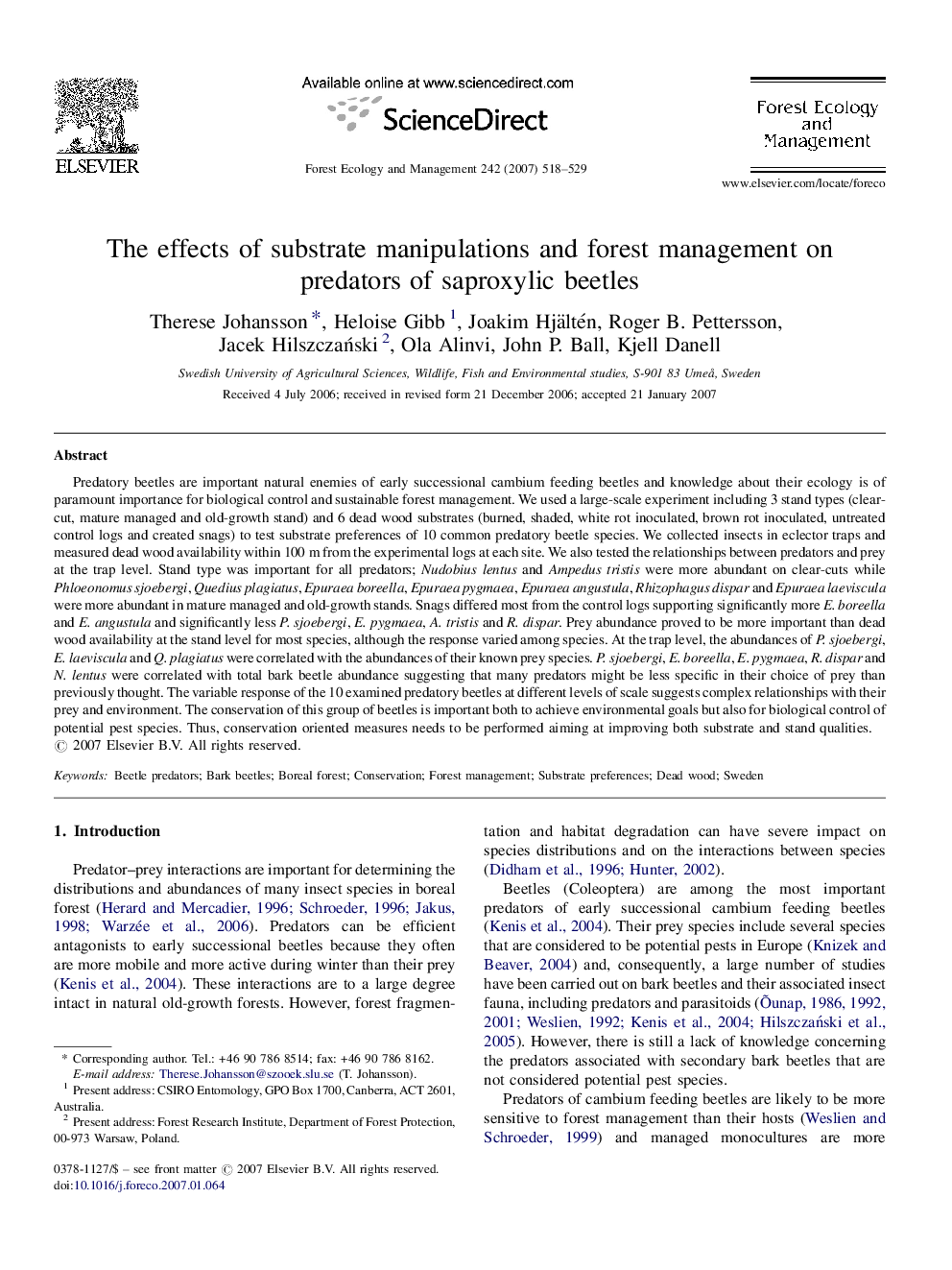| کد مقاله | کد نشریه | سال انتشار | مقاله انگلیسی | نسخه تمام متن |
|---|---|---|---|---|
| 90663 | 159391 | 2007 | 12 صفحه PDF | دانلود رایگان |

Predatory beetles are important natural enemies of early successional cambium feeding beetles and knowledge about their ecology is of paramount importance for biological control and sustainable forest management. We used a large-scale experiment including 3 stand types (clear-cut, mature managed and old-growth stand) and 6 dead wood substrates (burned, shaded, white rot inoculated, brown rot inoculated, untreated control logs and created snags) to test substrate preferences of 10 common predatory beetle species. We collected insects in eclector traps and measured dead wood availability within 100 m from the experimental logs at each site. We also tested the relationships between predators and prey at the trap level. Stand type was important for all predators; Nudobius lentus and Ampedus tristis were more abundant on clear-cuts while Phloeonomus sjoebergi, Quedius plagiatus, Epuraea boreella, Epuraea pygmaea, Epuraea angustula, Rhizophagus dispar and Epuraea laeviscula were more abundant in mature managed and old-growth stands. Snags differed most from the control logs supporting significantly more E. boreella and E. angustula and significantly less P. sjoebergi, E. pygmaea, A. tristis and R. dispar. Prey abundance proved to be more important than dead wood availability at the stand level for most species, although the response varied among species. At the trap level, the abundances of P. sjoebergi, E. laeviscula and Q. plagiatus were correlated with the abundances of their known prey species. P. sjoebergi, E. boreella, E. pygmaea, R. dispar and N. lentus were correlated with total bark beetle abundance suggesting that many predators might be less specific in their choice of prey than previously thought. The variable response of the 10 examined predatory beetles at different levels of scale suggests complex relationships with their prey and environment. The conservation of this group of beetles is important both to achieve environmental goals but also for biological control of potential pest species. Thus, conservation oriented measures needs to be performed aiming at improving both substrate and stand qualities.
Journal: Forest Ecology and Management - Volume 242, Issues 2–3, 30 April 2007, Pages 518–529